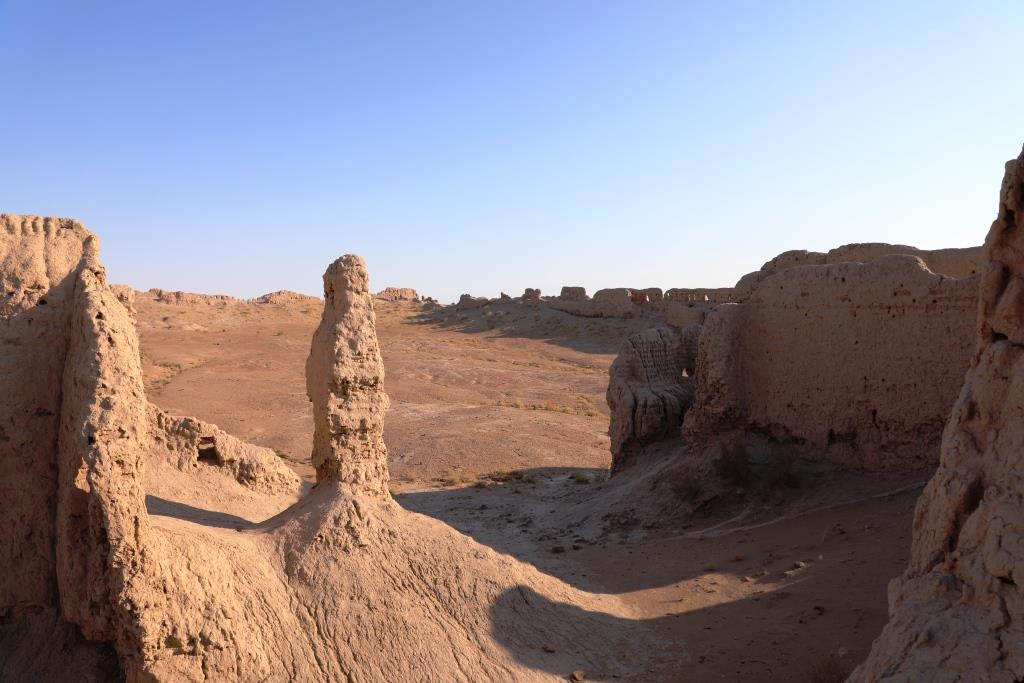 Janbas Kala, which in Turkic means "Fortress with a slope", is located along the 4P-193 highway, east of the village of the same name, 47 kilometers northeast of Turtkul. This ancient fortress was built in the early antique period, representing the last link in the chain of historical fortifications of Ancient Khorezm and is the last link in the chain of ancient fortifications. Its strategic location on the slope of the ridge gives a breathtaking view of the surrounding plain, immersing visitors in the atmosphere of antiquity.
Janbas Kala, which in Turkic means "Fortress with a slope", is located along the 4P-193 highway, east of the village of the same name, 47 kilometers northeast of Turtkul. This ancient fortress was built in the early antique period, representing the last link in the chain of historical fortifications of Ancient Khorezm and is the last link in the chain of ancient fortifications. Its strategic location on the slope of the ridge gives a breathtaking view of the surrounding plain, immersing visitors in the atmosphere of antiquity.
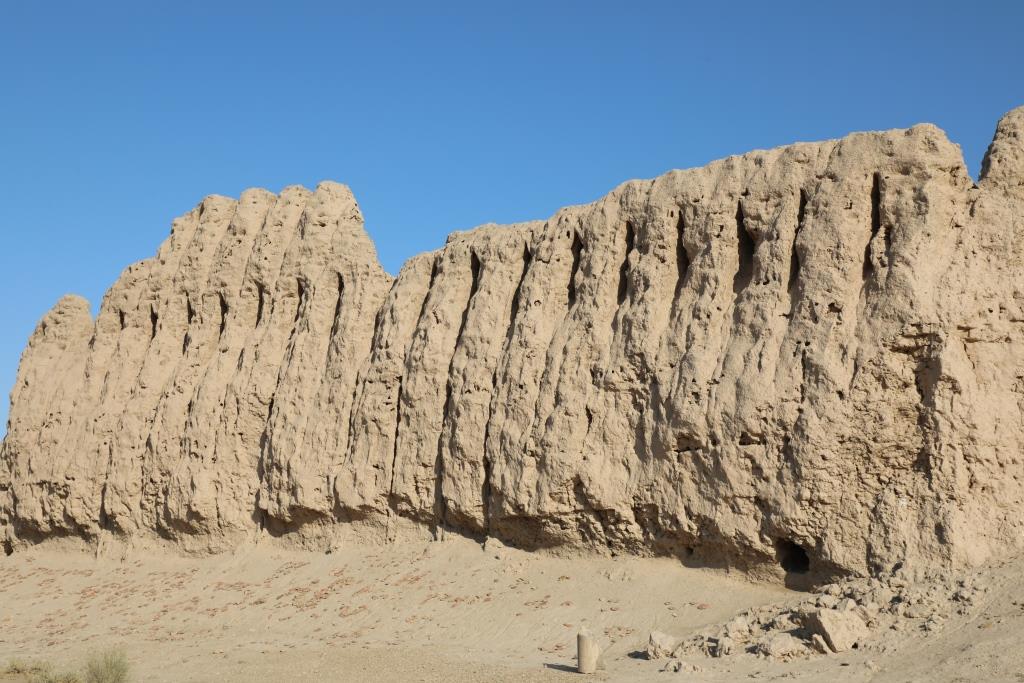 Janbas Kala was one of the first monuments discovered by the outstanding archaeologist Sergei Tolstov during the Khorezm expedition in 1938. The researcher established the date of its origin, believing that the fortress was built at the beginning of the 4th century BC, immediately after Khorezm gained independence from the Achaemenid Empire, and existed until the 1st century AD.
Janbas Kala was one of the first monuments discovered by the outstanding archaeologist Sergei Tolstov during the Khorezm expedition in 1938. The researcher established the date of its origin, believing that the fortress was built at the beginning of the 4th century BC, immediately after Khorezm gained independence from the Achaemenid Empire, and existed until the 1st century AD.
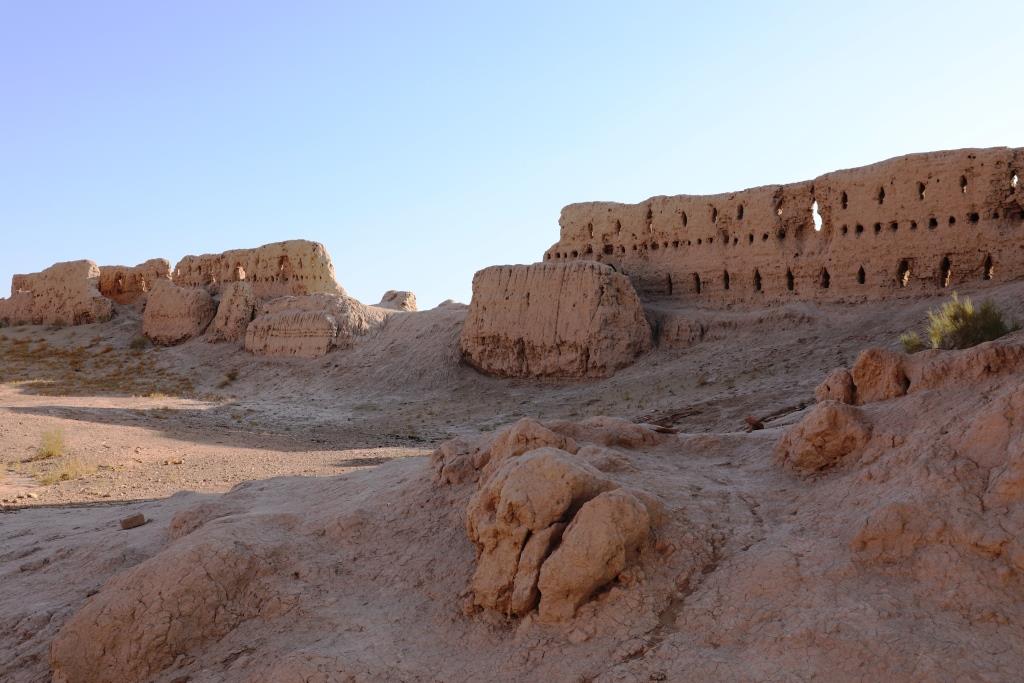 Janbas Kala stands out among other fortresses by the absence of towers and the presence of more than a thousand loopholes cut into its outer walls along the entire perimeter. High arrow-shaped loopholes are located in two rows in a checkerboard pattern. The fortress is reliably fortified with two powerful rows of walls built from huge square adobe bricks. On the double walls there were two-level internal corridors designed for archery. A narrow corridor connected the gate structure with the gate, which made it possible to lure the enemy into the cramped space of the labyrinth, depriving him of the opportunity to leave this place. In such a situation, the enemy found himself in a trap, losing all chances of salvation.
Janbas Kala stands out among other fortresses by the absence of towers and the presence of more than a thousand loopholes cut into its outer walls along the entire perimeter. High arrow-shaped loopholes are located in two rows in a checkerboard pattern. The fortress is reliably fortified with two powerful rows of walls built from huge square adobe bricks. On the double walls there were two-level internal corridors designed for archery. A narrow corridor connected the gate structure with the gate, which made it possible to lure the enemy into the cramped space of the labyrinth, depriving him of the opportunity to leave this place. In such a situation, the enemy found himself in a trap, losing all chances of salvation.
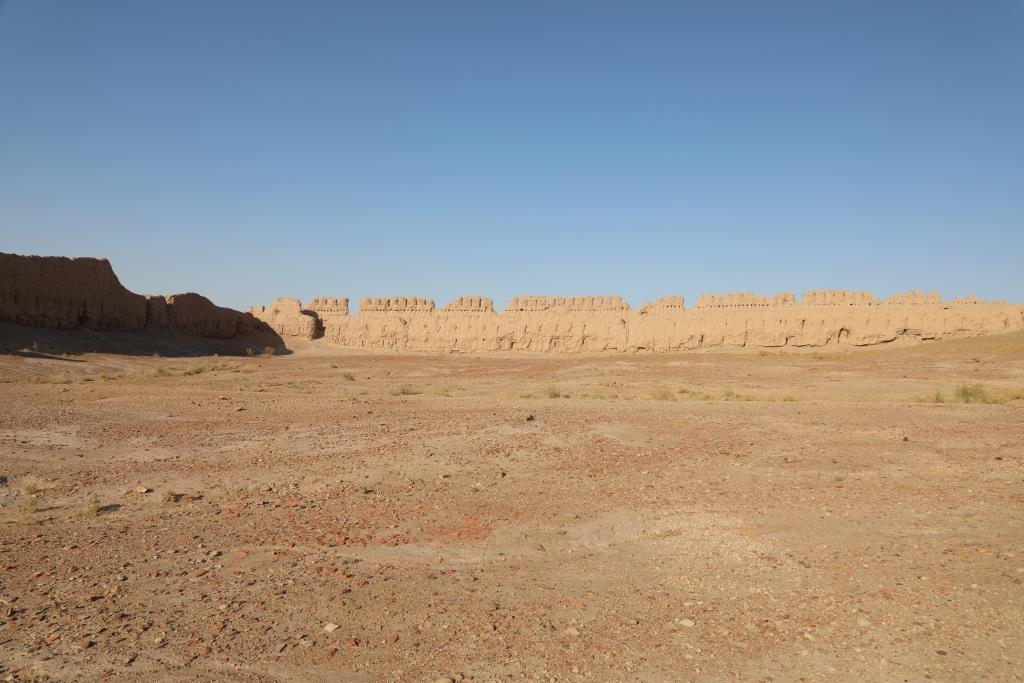 The main part of the Janbas Kala fortress is impressive in its size, stretching for 200 x 170 meters, and its impressive walls, majestically rising to a height of up to 20 meters, cannot but cause admiration. Inside the ancient fortress there is a street 30 meters wide, on both sides of which there are residential areas. Each of the areas included from 150 to 200 rooms. Thus, the adult population of Janbas Kala was approximately 2000 people, which indicates its significance as an important cultural and social center in the distant past.
The main part of the Janbas Kala fortress is impressive in its size, stretching for 200 x 170 meters, and its impressive walls, majestically rising to a height of up to 20 meters, cannot but cause admiration. Inside the ancient fortress there is a street 30 meters wide, on both sides of which there are residential areas. Each of the areas included from 150 to 200 rooms. Thus, the adult population of Janbas Kala was approximately 2000 people, which indicates its significance as an important cultural and social center in the distant past.
 The center of spiritual life of the inhabitants of the fortress was the fire temple, majestically rising to 4.5 meters. Its inhabitants professed Zoroastrianism - a religion that dominated Central Asia for over a thousand years. Inside the sanctuary there was an oval elevation of a regular shape, on the metal altar of which the priests carefully maintained the sacred fire.
The center of spiritual life of the inhabitants of the fortress was the fire temple, majestically rising to 4.5 meters. Its inhabitants professed Zoroastrianism - a religion that dominated Central Asia for over a thousand years. Inside the sanctuary there was an oval elevation of a regular shape, on the metal altar of which the priests carefully maintained the sacred fire.
 For five centuries, the fortress steadfastly defended its lands from enemy raids. However, in the 1st century, nomads managed to break through the wall to the south of the gate, and the fortress fell. The number of arrowheads found here indicates that fierce battles were fought in the citadel. The defenders of the fortress died, and those who managed to survive were driven into slavery.
For five centuries, the fortress steadfastly defended its lands from enemy raids. However, in the 1st century, nomads managed to break through the wall to the south of the gate, and the fortress fell. The number of arrowheads found here indicates that fierce battles were fought in the citadel. The defenders of the fortress died, and those who managed to survive were driven into slavery.
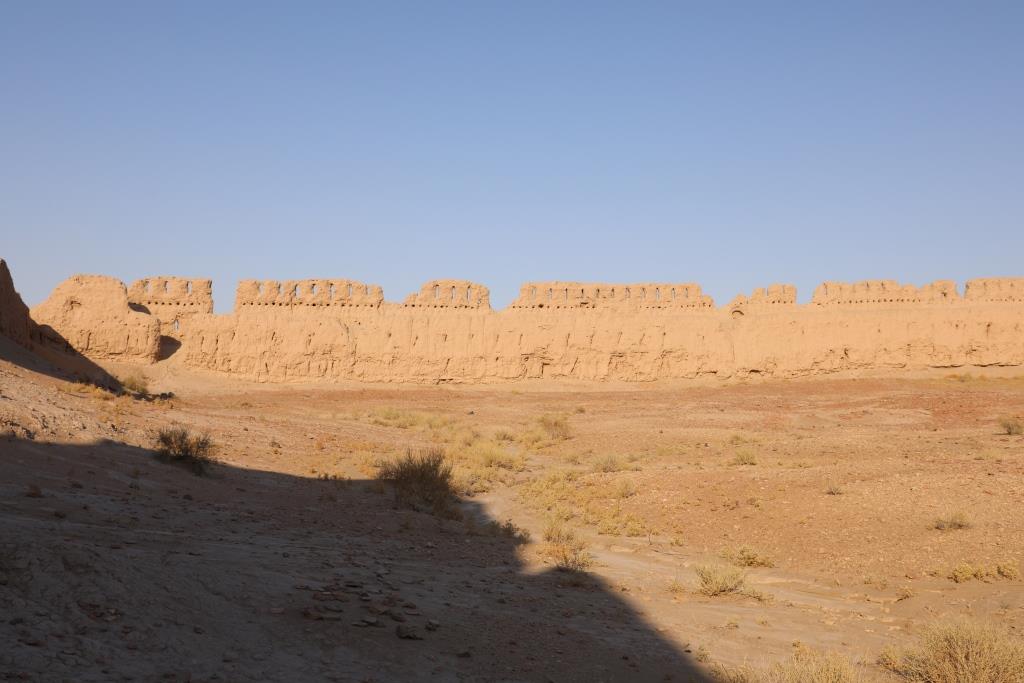 In the ruins of houses destroyed and burned by the invaders, artifacts were found that give a tangible outline of the life that once boiled in these places. Among the items found were terracotta figurines and metal items, fragments of ceramics, jewelry and many glass beads of various shapes and colors. These beads, used in the 3rd-2nd centuries BC, served as decoration for the beauties of the northern Black Sea region. It is obvious that Ancient Khorezm had established trade relations with various countries of Europe and Asia, which testifies to the rich cultural exchange and high level of development of this civilization.
In the ruins of houses destroyed and burned by the invaders, artifacts were found that give a tangible outline of the life that once boiled in these places. Among the items found were terracotta figurines and metal items, fragments of ceramics, jewelry and many glass beads of various shapes and colors. These beads, used in the 3rd-2nd centuries BC, served as decoration for the beauties of the northern Black Sea region. It is obvious that Ancient Khorezm had established trade relations with various countries of Europe and Asia, which testifies to the rich cultural exchange and high level of development of this civilization.
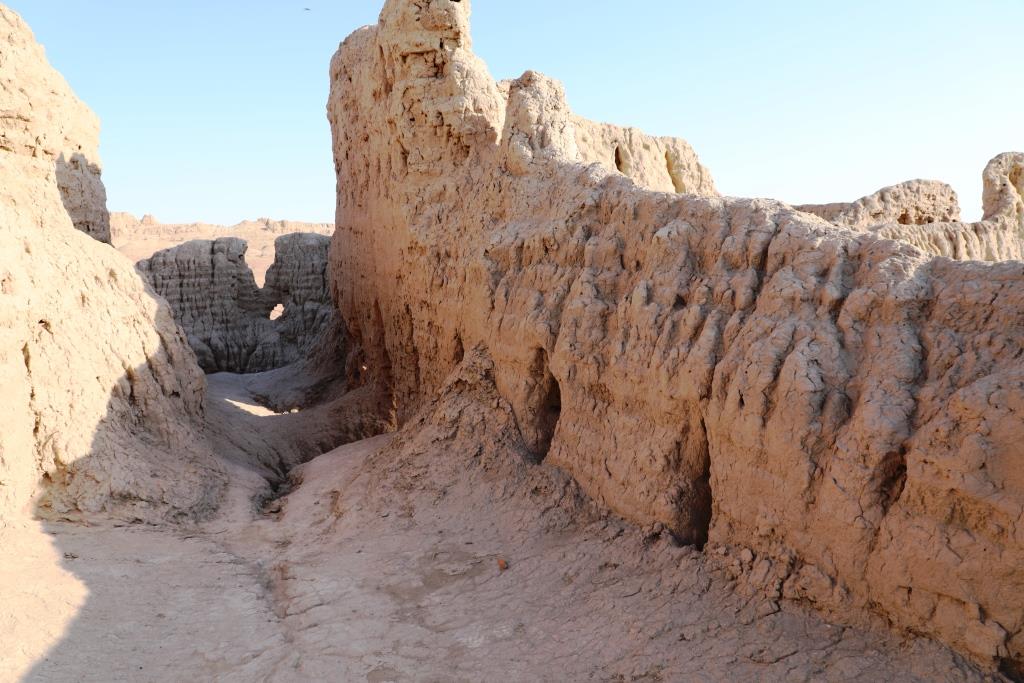 Despite serious damage caused by nomads and time, Janbas Kala has managed to preserve its majestic beauty for two thousand years. Its walls look especially impressive in the rays of the setting sun. Being under the clay walls of this ancient fortress, you feel how the whole surrounding world is filled with echoes of ancient eras and how many unknown secrets are still hidden in the shadows of the past.
Despite serious damage caused by nomads and time, Janbas Kala has managed to preserve its majestic beauty for two thousand years. Its walls look especially impressive in the rays of the setting sun. Being under the clay walls of this ancient fortress, you feel how the whole surrounding world is filled with echoes of ancient eras and how many unknown secrets are still hidden in the shadows of the past.
